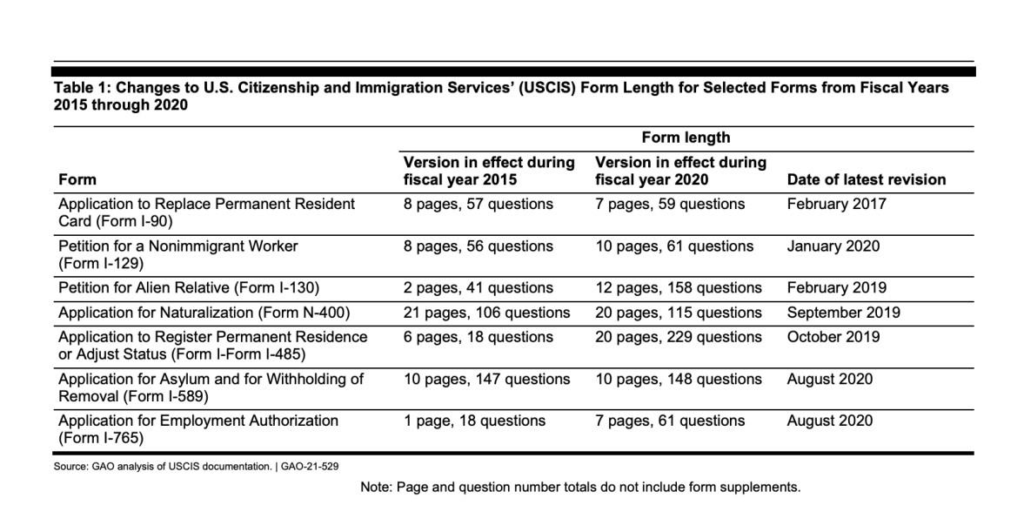The backlogs at USCIS have been the subject of constant complaints and conversation in the immigration community. Clients call attorneys, send emails, and routinely ask when their case will be adjudicated. Clients are frustrated by the delays and attorneys are at a loss to predict the time it may take for any case to be completed.
The truth has been elusive, however, as a long-time practitioner I often tell clients that a standard green card case used to take 5 months to process “before the Trump Administration.” This benchmark, “before the Trump Administration,” has been a constant refrain as lawyers try to explain to clients how the delays are new, and the future is unclear.
On August 18, 2021, the GAO published a report, “U.S. Citizenship & Immigration Services: Actions Needed to Address Pending Caseload,” that essentially pulled back the curtain and provided us with some data, evidence, and guidance on how these delays started. The report detailed how USCIS has the exact same case load, about 9-10 million cases per year, but now has much longer delays.
The report states that USCIS processing delays have grown over 85% from 2015 to 2020. That means case processing has essentially doubled! This doubling in case processing times happened during the Trump Administration and has not yet been rectified.

What are the Reasons?
One reason for the delays identified by the GAO has come from new longer forms that request more information. While these forms gather more information, USCIS implemented the data heavy forms without hiring new staff. This means that the same number of staff are doing work which might take twice as long. Keep in mind that updated USCIS forms are released almost every six months as it appears that USCIS is on a mission to change and update forms constantly. This means that future delays are almost certain.

Another factor identified the GAO is the employee attrition rate, which is not corrected by new hires. In fact, the hiring process at USCIS and in my experience all of DHS can take forever. Keep in mind that an FBI background check is required along with credit checks and work history review.
Here’s the catch – a lot of immigration is political. During the Trump years the emphasis moved to political agendas such as the border and enforcement. As a result of the constant fear mongering from the Trump administration a media circus developed at the border. The Trump Administration then sent staff from across USCIS to the border to engage in credible fear interviews. A second, less well-known fact was the development of a USCIS enforcement priority team that assisted US ICE in identifying individuals for deportation.
Another policy change was the implementation of more RFE’s for clients in every type of case. The deluge of RFE’s and RFE responses caused a huge, new workload for USCIS staff.
The policy of more RFE’s was implemented under Trump and has recently been thrown out.
Both polices were new and removed critical resources from USCIS and the main mission to process immigration cases. In this way, the Trump administration broke immigration. Those diverted resources created conflicting agendas, and generally disrupted USCIS such that major delays were created and now remain as part of his legacy.
The GAO report does it’s best to tamely give us some insight into the changes and problems at USCIS. The new Administration must take on these changes and get this agency back on track.
Citations
U.S. Government Accountability Office. (2021, August). United States Citizenship &
Immigration Services: Actions Needed To Address Pending Caseload. (Publication No. GAO-21529). Retrieved from https://www.gao.gov/assets/gao-21-529.pdf
Author: Sumeet Lall, Esq.
Editor: Marisa Chavez
